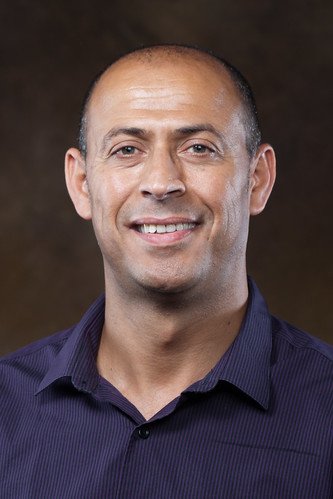By Maddie Johnson
University of Arkansas System Division of Agriculture
Arkansas Agricultural Experiment Station
FAYETTEVILLE, Ark. — As poultry companies weigh cost and efficiency with higher animal welfare standards, research comparing conventional and slow-growing broiler breeds showed that the slow-growing chickens displayed behaviors more closely associated with positive welfare.
Broilers — chickens specifically bred for meat production — are typically raised for six to eight weeks, while slow-growing broilers need up to 12 weeks to reach maturity.
AN EYE FOR WELFARE — Rosie Whittle, a poultry science postdoctoral fellow with the Center for Animal Food Wellbeing and the Dale Bumpers College of Agricultural, Life, and Food Sciences, worked on a study examining conventional and slow-growing broilers by tracking their behaviors to see how they exhibit positive welfare. (Image courtesy of Rosie Whittle)
Though gaining popularity in some European markets, slow-growing broilers have not seen the same market expansion in the United States, as they take longer to reach market weight than conventional broilers.
“The economic impact to the broiler industry raises the question: 'Why would you want to use a broiler that is going to eat more food, grow slower, and cost more to produce?'” said Rosie Whittle, poultry science postdoctoral fellow with the Center for Food Animal Wellbeing and the Dale Bumpers College of Agricultural, Food and Life Sciences at the University of Arkansas.
Whittle, alongside Shawna Weimer, assistant professor of poultry science and director of the Center for Food Animal Wellbeing, set out to explore this question facing industry leaders who are weighing the choice of conventional versus slow-growing broilers.
Weimer conducts research for the Arkansas Agricultural Experiment Station, part of the University of Arkansas System Division of Agriculture. The Center for Food Animal Wellbeing is a unit of the Division of Agriculture.
Their work explored the impacts of genetic strain, stocking density, and, most importantly, the comparison of physiological versus chronological age between the two genetic strains on broiler behavior. Genetic strain, or the specific breed of chicken, defines whether broilers are conventional or slow growing. Stocking density represents the number of birds in a specific area.
Researchers reviewed video recordings of the birds at specified intervals to track behaviors, such as walking, standing, and preening, which are signs of positive animal welfare. Preening is when a bird uses its beak to clean its feathers.
Their study, “Effects of genetic strain, stocking density, and age on broiler behavior,” was published in Poultry Science, an official journal of the Poultry Science Association.
Results of the study revealed that a larger percentage of slow-growing broilers were observed standing, walking, and preening, while more conventional broilers sat in a lateral posture. The effects of stocking density were minimal, so the number of birds in an area did not have a significant impact on broiler behavior.
Detailing bird behavior
LOOKING FORWARD — Shawna Weimer, assistant professor of poultry science and director of the Center for Food Animal Wellbeing, served as corresponding author of the study and said she would like to see further research on a larger scale to examine what other factors could affect animal welfare. (University of Arkansas System Division of Agriculture photo)
Weimer pointed out that “animal welfare is quite dynamic” and emphasized that further investigations of broiler behavior should be undertaken. Whittle also stressed that their research was focused on understanding the effects of growth rate on broiler behavior, not necessarily what is best for companies or consumers.
Whittle also noted that the study focused on two types of broilers, but “all genetics companies have a different recipe for chickens.” Therefore, in tracking behavior, it is important to be aware of the possibility that “one genetic strain of broiler behaves completely different to the other,” she said.
Whittle said further research is required because “it’s always important to expand so we’re not just generalizing based on two specific genotypes.”
Co-authors of the work included Darrin Karcher and Marisa Erasmus, both associate professors of animal sciences at Purdue University. Weimer serves as corresponding author, meaning she is responsible for communication and questions about the publication.
The project was supported by Purdue University’s Department of Animal Sciences and the Center for Food Animal Wellbeing. The animal care staff at Purdue University’s Poultry Unit, Olivia Walton, Heidi Rinehart, and Nathan Griffith also contributed to the work.
To learn more about the Division of Agriculture research, visit the Arkansas Agricultural Experiment Station website. Follow us on X at @ArkAgResearch, subscribe to the Food, Farms and Forests podcast and sign up for our monthly newsletter, the Arkansas Agricultural Research Report. To learn more about the Division of Agriculture, visit uada.edu. Follow us on X at @AgInArk. To learn about extension programs in Arkansas, contact your local Cooperative Extension Service agent or visit uaex.uada.edu.

















